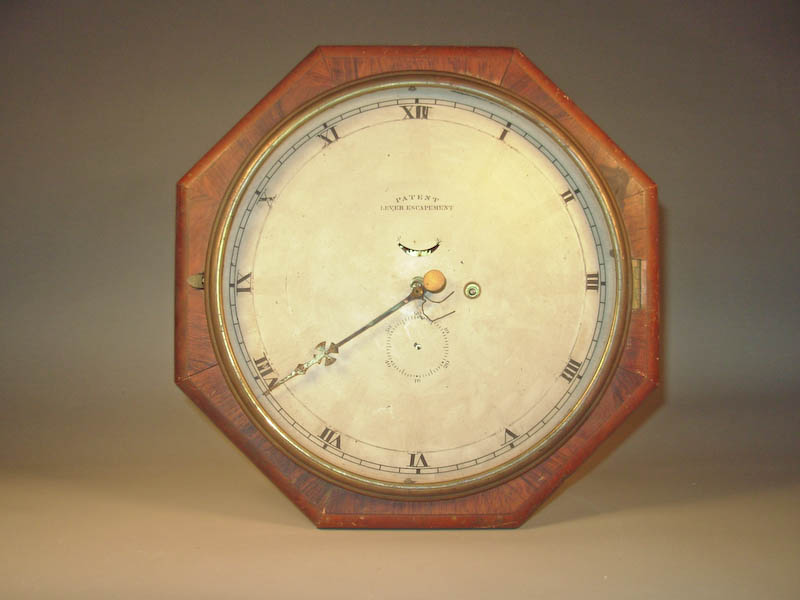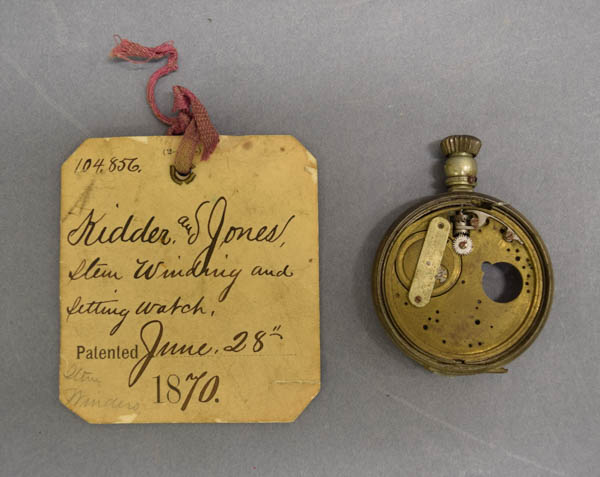All of us are governed by time - mostly by the lack of it. Keeping track of time through the use of clocks and watches has evolved over thousands of years. Here in the United States, during the nineteenth century, many inventors received patents for their “novel” improvements in both clocks and watches. Hagley is fortunate to have more than forty patent models illustrating the kinds of improvements that were made during this time period.

Patent Model – Improvement in Time-Pieces
Patent #41,617; Alex Hall from New York, NY; February 16, 1864
Museum Acc. #61.47.620
The majority of patent models in the collection focus on improvements to watches – both those that were wound by keys and the then more modern stem-winding method which became commercially produced around the 1850s. Our patent models date from 1846 to 1886 which was an important time in watch development. The patentees are a diverse group consisting of those from the United States as well as those from France, Germany and Switzerland which is well known for its clocks. It was common for foreigners to come to the United States to patent their improvement and the reverse is also true with Americans going aboard to patent their improvements in other countries.
One of the benefits of recently receiving the Rothschild Patent Model collection is that it brought to Hagley other examples of specific inventors’ work that we already had one example in the collection. In the case of Florentine Arioso Jones (1841-1916) it brought that number up to five patent models combining those that he had patented with a couple that he had been assigned the rights to.

Patent model - Improvement in Stem-Winding and Hand-Setting Watch
Patent #47,495; Charles Kidder and Florentine Jones from Boston, MA; June 28, 1870
Museum Acc. #2015.14.1190a,b
Florentine Jones has an interesting story. After the Civil War, he went to work for E. Howard & Co., a watch making firm. Around 1867 he decided to start his own company not in the United States instead going abroad. After touring Europe, he settled on Schaffhausen, Switzerland as a place for his business for a very familiar reason. It was there that he found the necessary conditions for the waterpower he needed to operate his machinery, not unlike the same reasons E. I. du Pont started the DuPont Company here on the Hagley site. Jones wanted to make watches using what was then considered the “American System” which was through the use of interchangeable parts. His business, F. A. Jones & Co., eventually became IWC (International Watch Company) which is still in business today.
Hagley’s patent model collection contains many prominent and successful inventors such as Florentine Jones. This group of clock related patent models is all processed and available by appointment for research visits. If you would like to see our online collection of more than 500 patent models, please visit our digital Museum Collections here.
Debra Hughes is Museum Curator of Collections and Exhibits at the Hagley Museum and Library.
